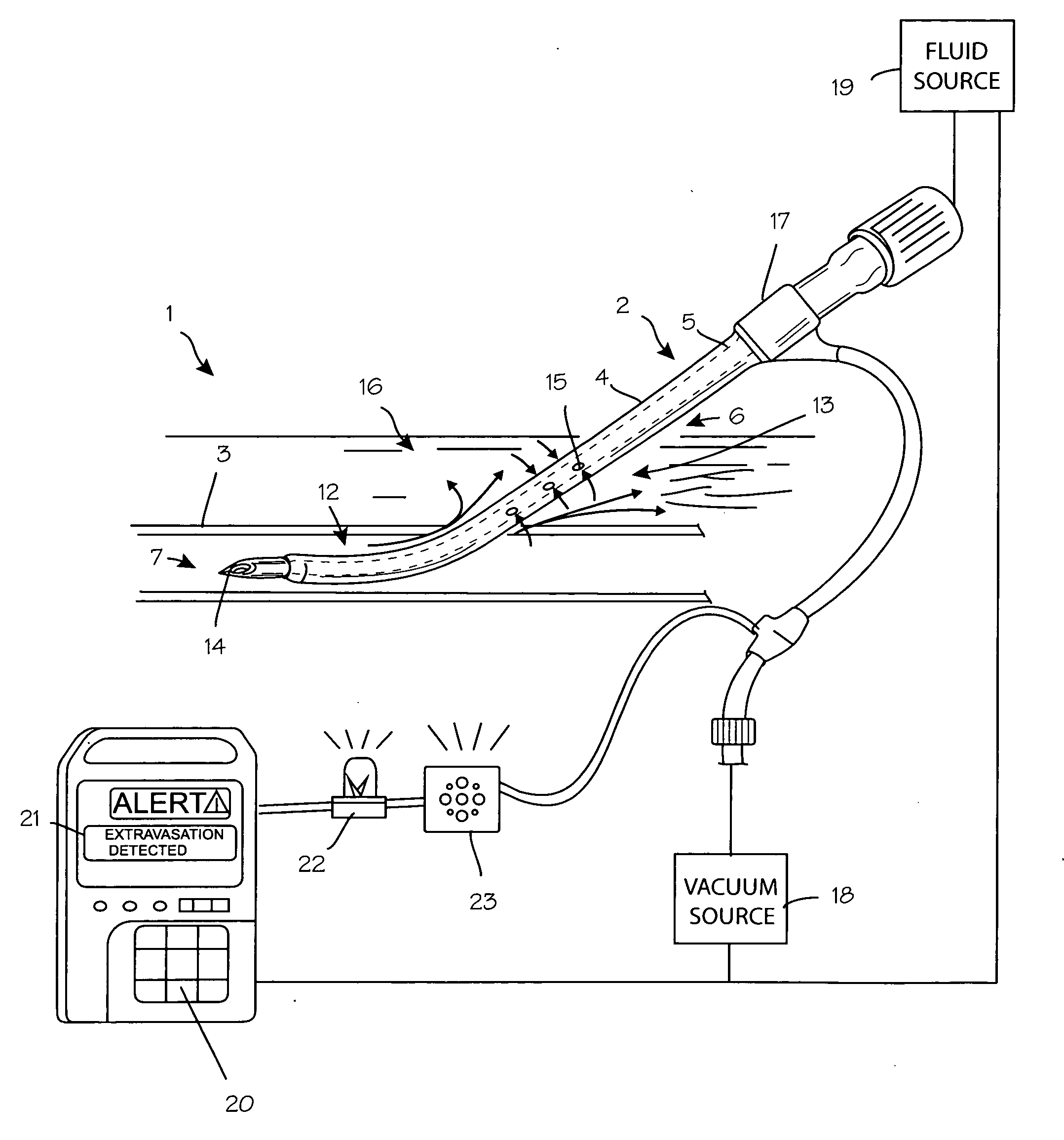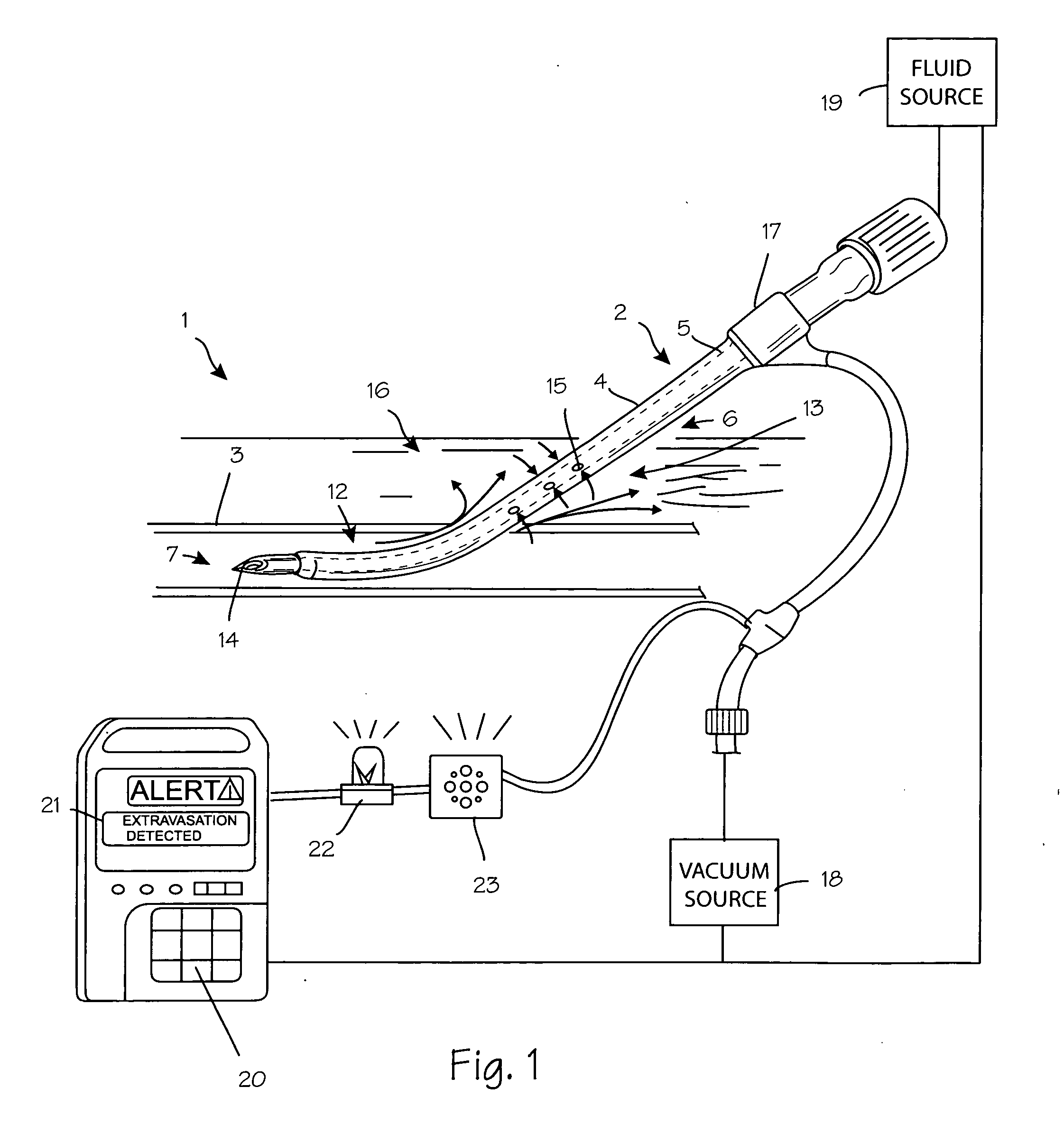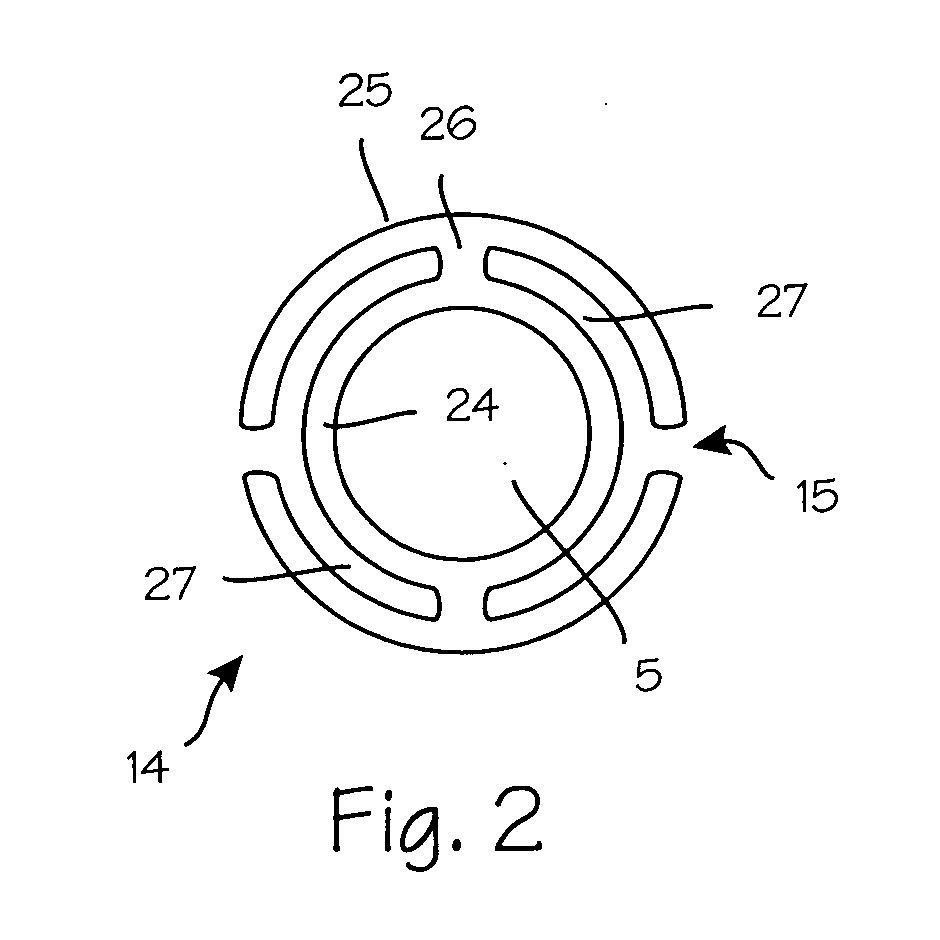Anti-extravasation catheter
a catheter and anti-extravasation technology, which is applied in the field of catheters, can solve the problems of fluid escaping into the soft tissues surrounding the infusion site, adverse effects on the patient, and skin necrosis, and achieve the effect of reducing the amount of fluid extravasation
- Summary
- Abstract
- Description
- Claims
- Application Information
AI Technical Summary
Benefits of technology
Problems solved by technology
Method used
Image
Examples
Embodiment Construction
[0020]FIG. 1 is a patient 1 with an anti-extravasation catheter 2 inserted into a peripheral vein 3. The anti-extravasation catheter comprises a tube 4 having a central lumen 5 (shown in phantom) extending from the proximal end to the distal end. The tube has a length and an outer diameter suitable for extending from an insertion point 6 on a patient to a treatment / infusion site 7. The insertion point is the place where the catheter is inserted in a patient. The infusion site is the area in the body where the catheter infuses a fluid. A peripheral intravenous catheter typically comprises a shorter tube (a few centimeters long) inserted through the skin into a peripheral vein. In the case of a peripherally inserted central catheter, the tube will be sized and dimensioned to extend from a peripheral insertion point to the central venous system including the superior vena cava or the right atrium. When the infusion catheter is a central venous catheter, the tube is sized and dimensione...
PUM
 Login to View More
Login to View More Abstract
Description
Claims
Application Information
 Login to View More
Login to View More - R&D
- Intellectual Property
- Life Sciences
- Materials
- Tech Scout
- Unparalleled Data Quality
- Higher Quality Content
- 60% Fewer Hallucinations
Browse by: Latest US Patents, China's latest patents, Technical Efficacy Thesaurus, Application Domain, Technology Topic, Popular Technical Reports.
© 2025 PatSnap. All rights reserved.Legal|Privacy policy|Modern Slavery Act Transparency Statement|Sitemap|About US| Contact US: help@patsnap.com



